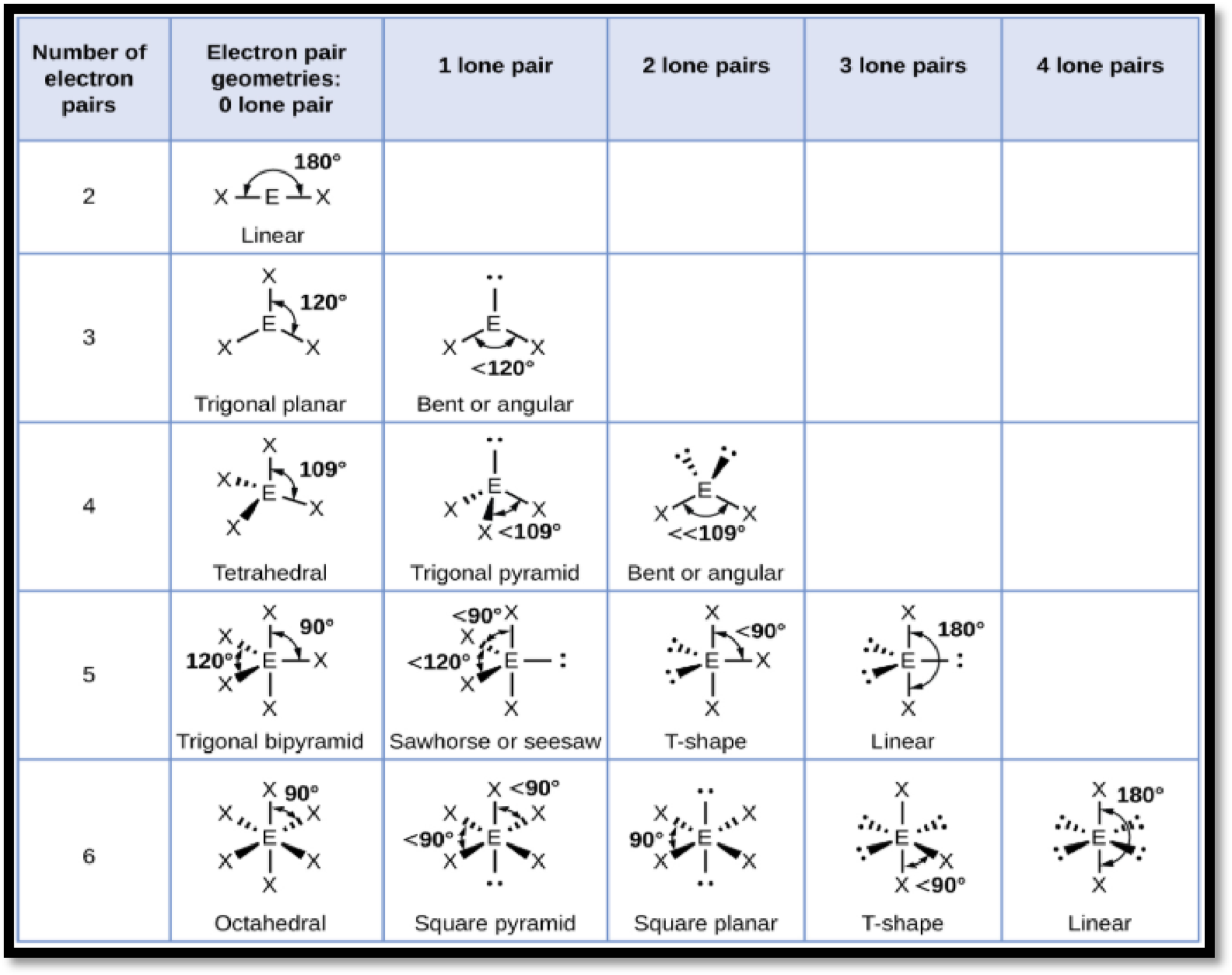
Concept explainers
(a)
Interpretation:
Reason for the stable Xenon fluorides have an even number of Fluorine atoms has to be explained.
Concept Introduction:
Electronic configuration:
The arrangement of electrons in orbitals of an atom is known as electronic configuration.
In the electronic configuration, the electrons are arranged in the increasing order in orbitals.
(b)
Interpretation:
Reason for the ionic species
Concept Introduction:
Electronic configuration:
The arrangement of electrons in orbitals of an atom is known as electronic configuration.
In the electronic configuration, the electrons are arranged in the increasing order in orbitals.
(c)
Interpretation:
The shape of
Concept Introduction:
Valence shell electron pair repulsion (VSEPR) theory:
The geometry of molecule is predicted by valence shell electron pair repulsion (VSEPR) theory, this theory state that the repulsion force between lone pair and bond pair electrons of central atom is given by,
Lone pair-lone pair > lone pair - bond pair > bond pair - bond pair
From the order of repulsion forces and number of lone pair electrons, bond pair electrons that are present in the central atom, the geometry of molecule is assigned in the below manner,

Figure 1
Want to see the full answer?
Check out a sample textbook solution
Chapter 14 Solutions
Chemistry: The Molecular Nature of Matter and Change
 ChemistryChemistryISBN:9781305957404Author:Steven S. Zumdahl, Susan A. Zumdahl, Donald J. DeCostePublisher:Cengage Learning
ChemistryChemistryISBN:9781305957404Author:Steven S. Zumdahl, Susan A. Zumdahl, Donald J. DeCostePublisher:Cengage Learning ChemistryChemistryISBN:9781259911156Author:Raymond Chang Dr., Jason Overby ProfessorPublisher:McGraw-Hill Education
ChemistryChemistryISBN:9781259911156Author:Raymond Chang Dr., Jason Overby ProfessorPublisher:McGraw-Hill Education Principles of Instrumental AnalysisChemistryISBN:9781305577213Author:Douglas A. Skoog, F. James Holler, Stanley R. CrouchPublisher:Cengage Learning
Principles of Instrumental AnalysisChemistryISBN:9781305577213Author:Douglas A. Skoog, F. James Holler, Stanley R. CrouchPublisher:Cengage Learning Organic ChemistryChemistryISBN:9780078021558Author:Janice Gorzynski Smith Dr.Publisher:McGraw-Hill Education
Organic ChemistryChemistryISBN:9780078021558Author:Janice Gorzynski Smith Dr.Publisher:McGraw-Hill Education Chemistry: Principles and ReactionsChemistryISBN:9781305079373Author:William L. Masterton, Cecile N. HurleyPublisher:Cengage Learning
Chemistry: Principles and ReactionsChemistryISBN:9781305079373Author:William L. Masterton, Cecile N. HurleyPublisher:Cengage Learning Elementary Principles of Chemical Processes, Bind...ChemistryISBN:9781118431221Author:Richard M. Felder, Ronald W. Rousseau, Lisa G. BullardPublisher:WILEY
Elementary Principles of Chemical Processes, Bind...ChemistryISBN:9781118431221Author:Richard M. Felder, Ronald W. Rousseau, Lisa G. BullardPublisher:WILEY





